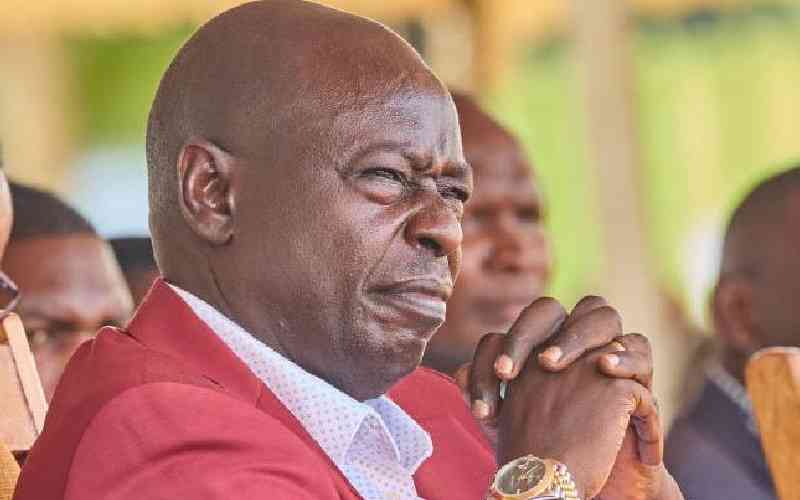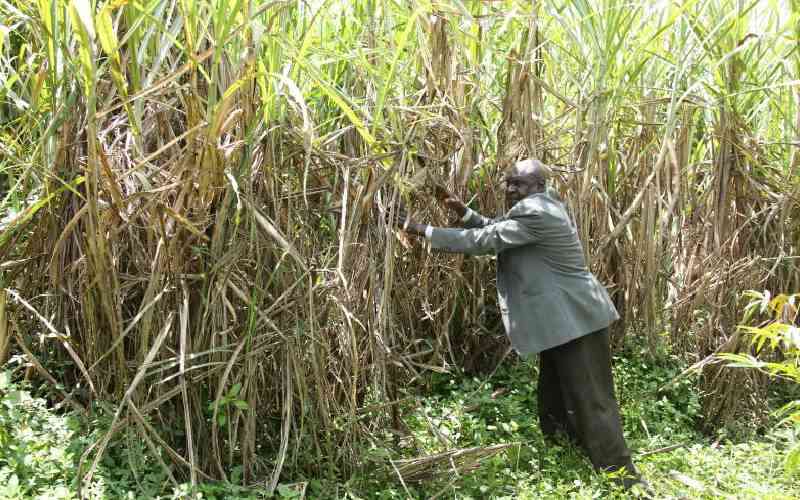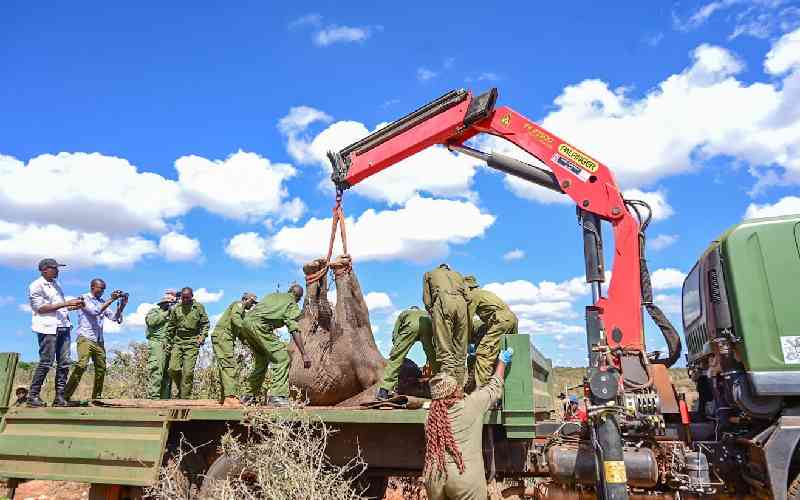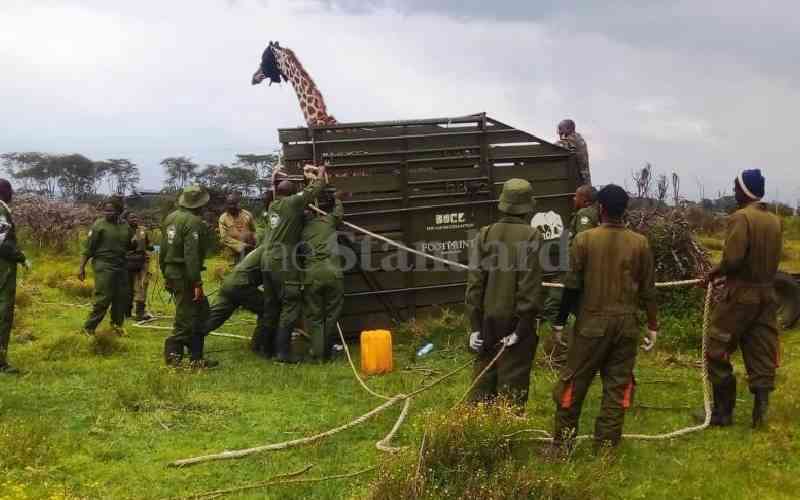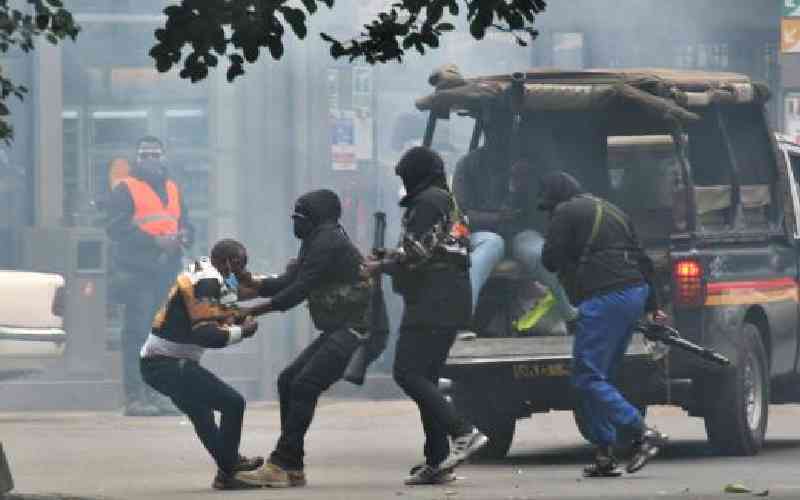
Shortly before 11 am on the last Saturday in May, a heavily laden white Mitsubishi truck pulled into the Fuji Motors East Africa car dealership in an industrial neighbourhood on the northern edge of Mombasa.
The truck's cargo was not "household equipment" as declared, but 228 elephant tusks and 74 ivory pieces weighing a total of 2,152 kilograms (4,700 pounds).
When Kenyan police officers raided the car lot five days later, they refused a bribe of five million shillings ($55,000, 49,000 euros), seized the ivory and arrested two men. The bust was one of the biggest in the country's history but the suspected mastermind, Feisal Mohamed Ali, aged 46, had escaped.
Ali was "alleged to be the ringleader of an ivory smuggling ring in Kenya" according to Interpol, and in November the international police organisation listed him among the world's nine "most wanted environmental criminals".
A month later Ali was arrested in neighbouring Tanzania, extradited to Kenya and charged with illegally dealing in wildlife trophies.
It is rare for an alleged ivory kingpin to be caught, and activists hope Ali's trial will shine a light on the shadowy supply chain that funnels ivory from Africa to Asian markets.
"People who get apprehended are mainly the foot soldiers, the poachers or foreign middlemen," said Mary Rice, executive director of the London-based Environmental Investigation Agency, which recently exposed the scale of ivory smuggling out of Tanzania.
"There hasn't been a single kingpin prosecuted," she said.
The poachers commonly targeted by law enforcement officers are paid around $100 per kilo for ivory at source, but they know almost nothing of the resource extraction machinery of which they are small, replaceable cogs.
Experts say that international criminal gangs control the trade, pushing Africa's elephants towards extinction. A joint UN Environment Programme and Interpol study in 2013 said that up to 25,000 African elephants are killed each year to feed an illegal trade worth up to $188 million.
- Mafia-like organisations -
"Forget about the poachers, this is organised crime," said Ofir Drori, corruption investigator and founding director of Eagle Wildlife Law Enforcement. "It's not an African problem, the trade is international."
The supply end of the global ivory pipeline begins in the besieged nature reserves of East and Central Africa and ends at the Indian Ocean ports of Kenya and Tanzania, from where shipping containers with hidden cargoes of ivory are exported to Asia.
DNA tests on large ivory seizures over the last five years have shown the vast majority is sourced from two areas: Tanzania's Selous Reserve and Central Africa's Congo Basin rainforest. Almost all of it ends up in large, consolidated stockpiles at the ports of Mombasa, Dar es Salaam and Zanzibar.
Stay informed. Subscribe to our newsletter
"There's been a substantial shift in the nature of the people involved in the ivory trade," said Varun Vira, chief of analysis at C4ADS, who has investigated the criminal syndicates involved.
The modern trade is dominated by a small number of mafia-like organisations capable of paying off -- or putting on the payroll -- a reservoir of hunters and drivers enabled by a network of park rangers, police officers, customs officials, shipping agents and freight forwarders as well as detectives and judges to subvert court cases if things go wrong.
Influential politicians are also paid to "oil the wheels," as one conservationist put it, and to provide the syndicates with high-level protection.
Working in close partnership, Asian and African criminal gangs control the entire supply chain from source to market. The gangs are becoming more integrated with Asian criminals living and working in Africa where they can maintain close control over operations and "nest" illicit businesses within legal import-export companies.
Price said that the Chinese bosses she has investigated in Africa worked hard to limit their exposure. "They never really got their hands dirty. They paid others to do the work," she said.
- Low risk business -
Bribery and corruption facilitate the largely uninterrupted flow of ivory tusks which are commonly shipped in 20 or 40-foot (6 or 12-metre) containers and hidden among legally exported products such as nuts, garlic, sea shells and dried fish, or behind false walls and floors.
"There had been this concept that ivory poaching was somewhat opportunistic and being done on a small-scale by local people but the level of sophistication is greater than we ever thought," said Adam Roberts, chief executive of Born Free USA, a wildlife charity.
The growing size of seizures, frequently more than 500 kilograms at a time, indicates the involvement of sophisticated criminal networks able to move huge quantities at a time, according to TRAFFIC, the organisation mandated to monitor the international trade.
Ivory is worth more than $2,100 per kilo at market but with arrests rare, convictions infrequent and penalties low there are few disincentives. "The profits make it worth doing even if you get caught," said Roberts.
When large seizures are made arrests and convictions rarely follow. A recent five-year study of wildlife cases before Kenyan courts found that only seven percent of those convicted of offences against elephants and rhinos actually went to jail, despite the crimes carrying a maximum ten-year sentence.
"It's a miracle for anyone arrested in Kenya with ivory to be jailed," said Drori who co-authored the report for charity Wildlife Direct.
As Ali's trial gets underway conservationists hope that a successful conviction will lay bare the workings of the international syndicates and send a warning to others involved in the illegal trade. "If Ali is what everybody thinks he is then this is a signal flare," said Vira.
 The Standard Group Plc is a
multi-media organization with investments in media platforms spanning newspaper
print operations, television, radio broadcasting, digital and online services. The
Standard Group is recognized as a leading multi-media house in Kenya with a key
influence in matters of national and international interest.
The Standard Group Plc is a
multi-media organization with investments in media platforms spanning newspaper
print operations, television, radio broadcasting, digital and online services. The
Standard Group is recognized as a leading multi-media house in Kenya with a key
influence in matters of national and international interest.
 The Standard Group Plc is a
multi-media organization with investments in media platforms spanning newspaper
print operations, television, radio broadcasting, digital and online services. The
Standard Group is recognized as a leading multi-media house in Kenya with a key
influence in matters of national and international interest.
The Standard Group Plc is a
multi-media organization with investments in media platforms spanning newspaper
print operations, television, radio broadcasting, digital and online services. The
Standard Group is recognized as a leading multi-media house in Kenya with a key
influence in matters of national and international interest.


